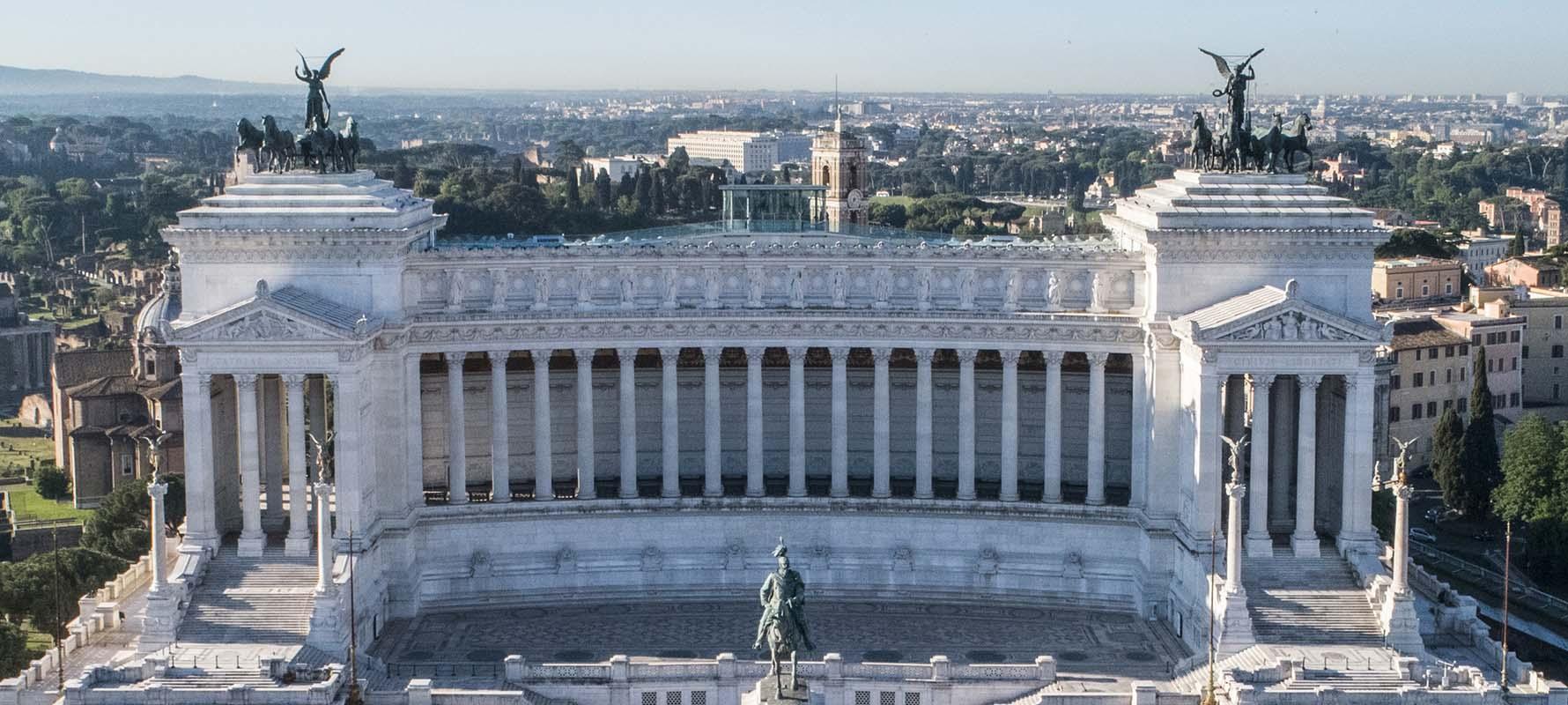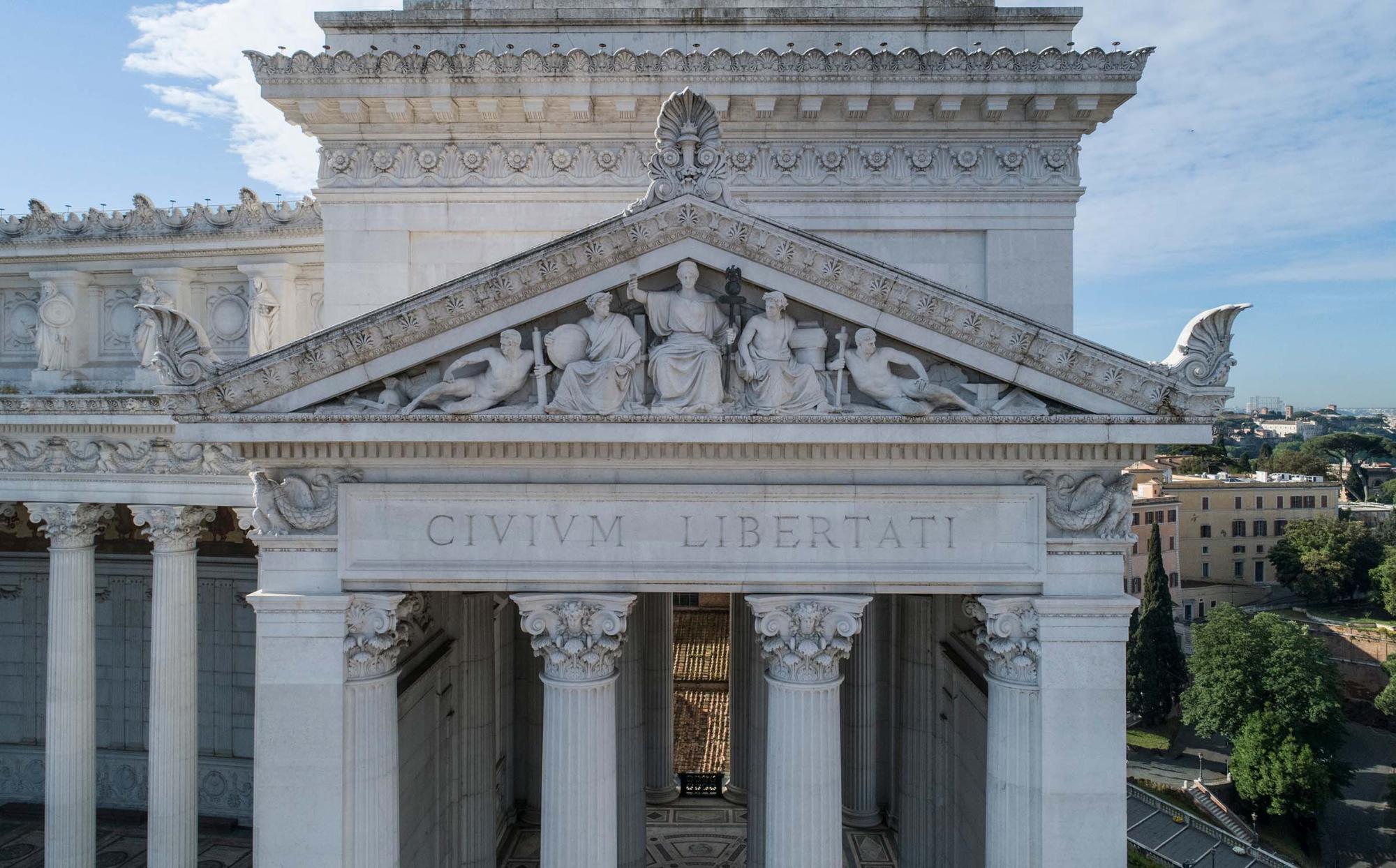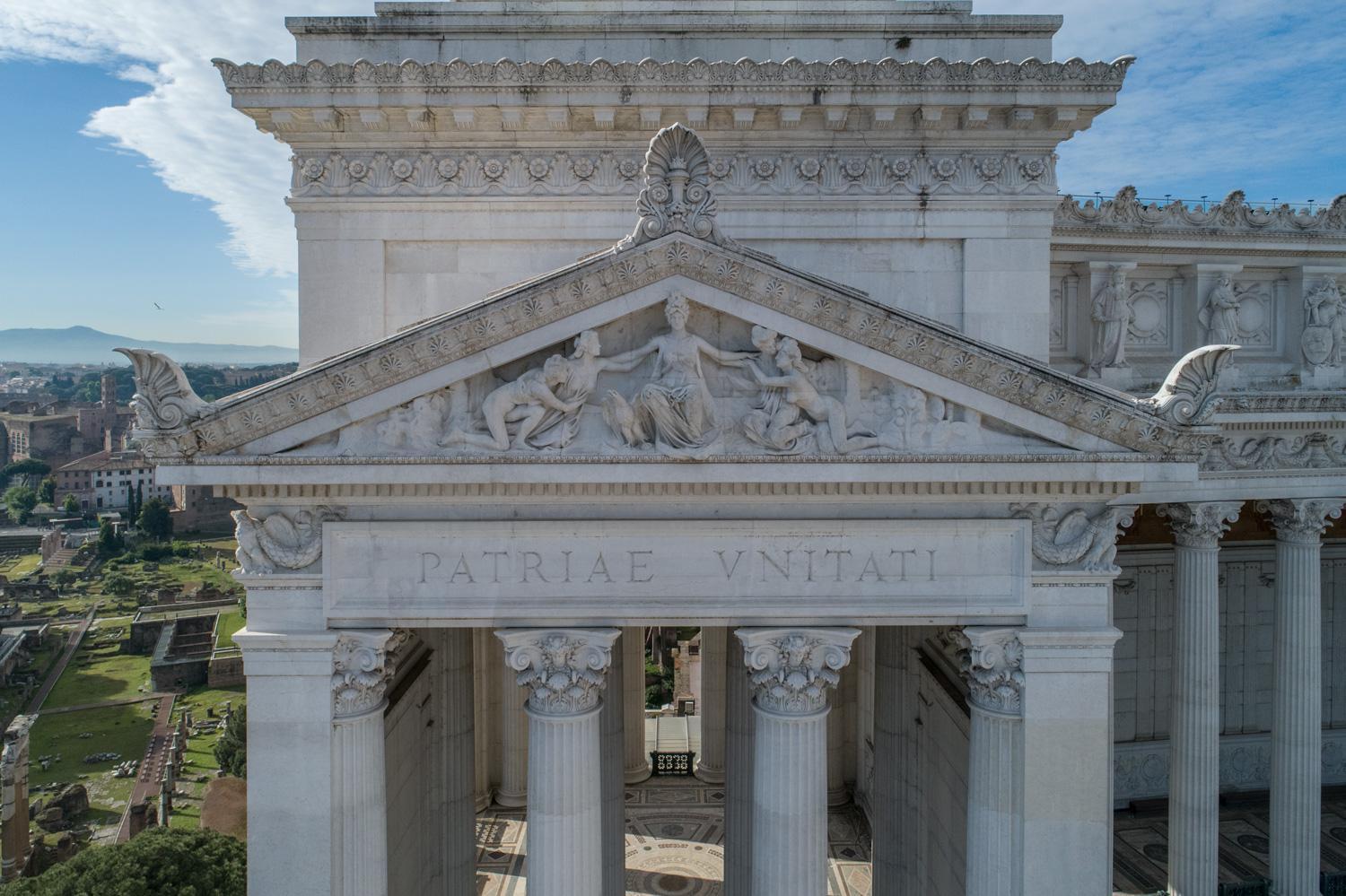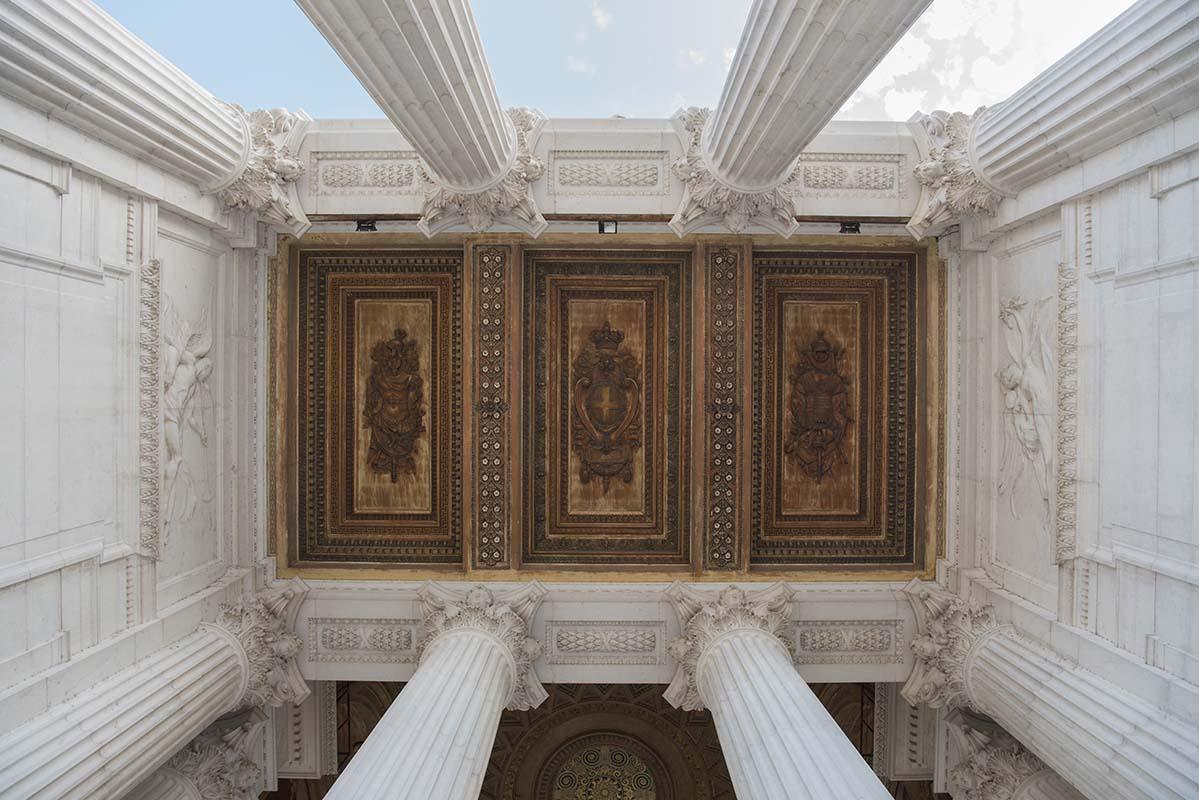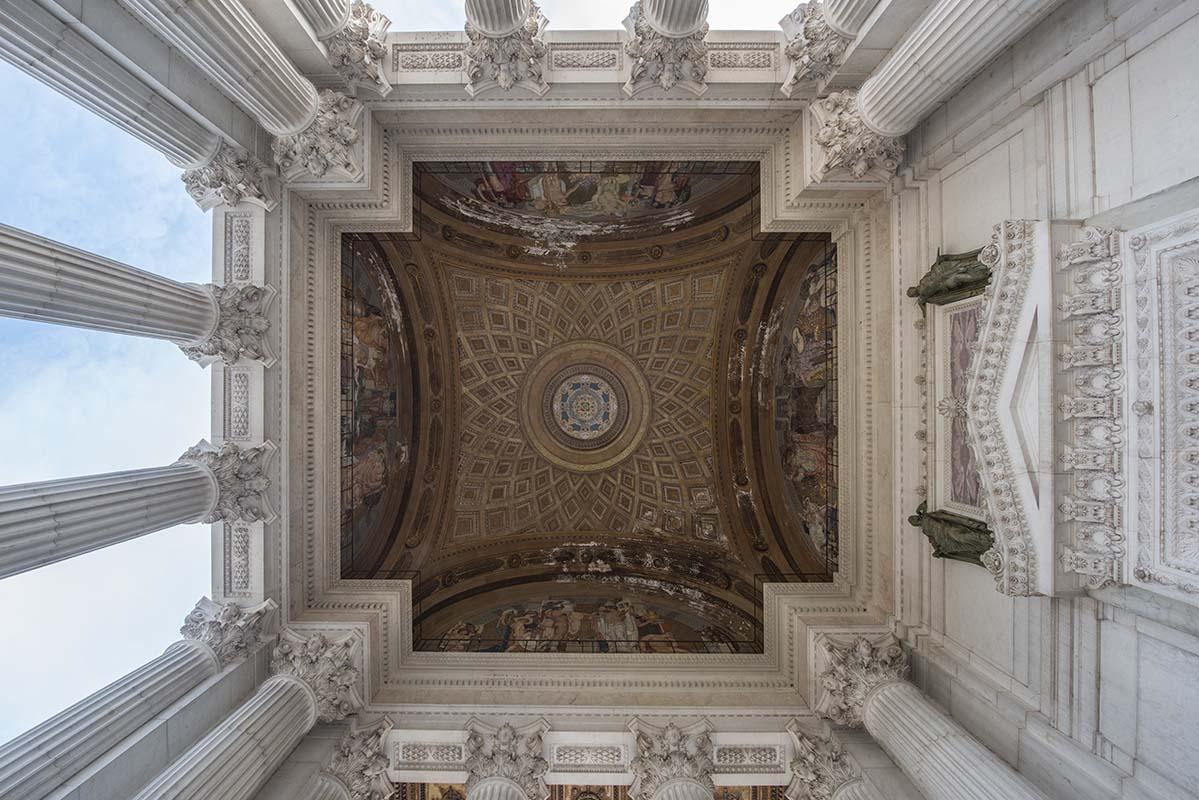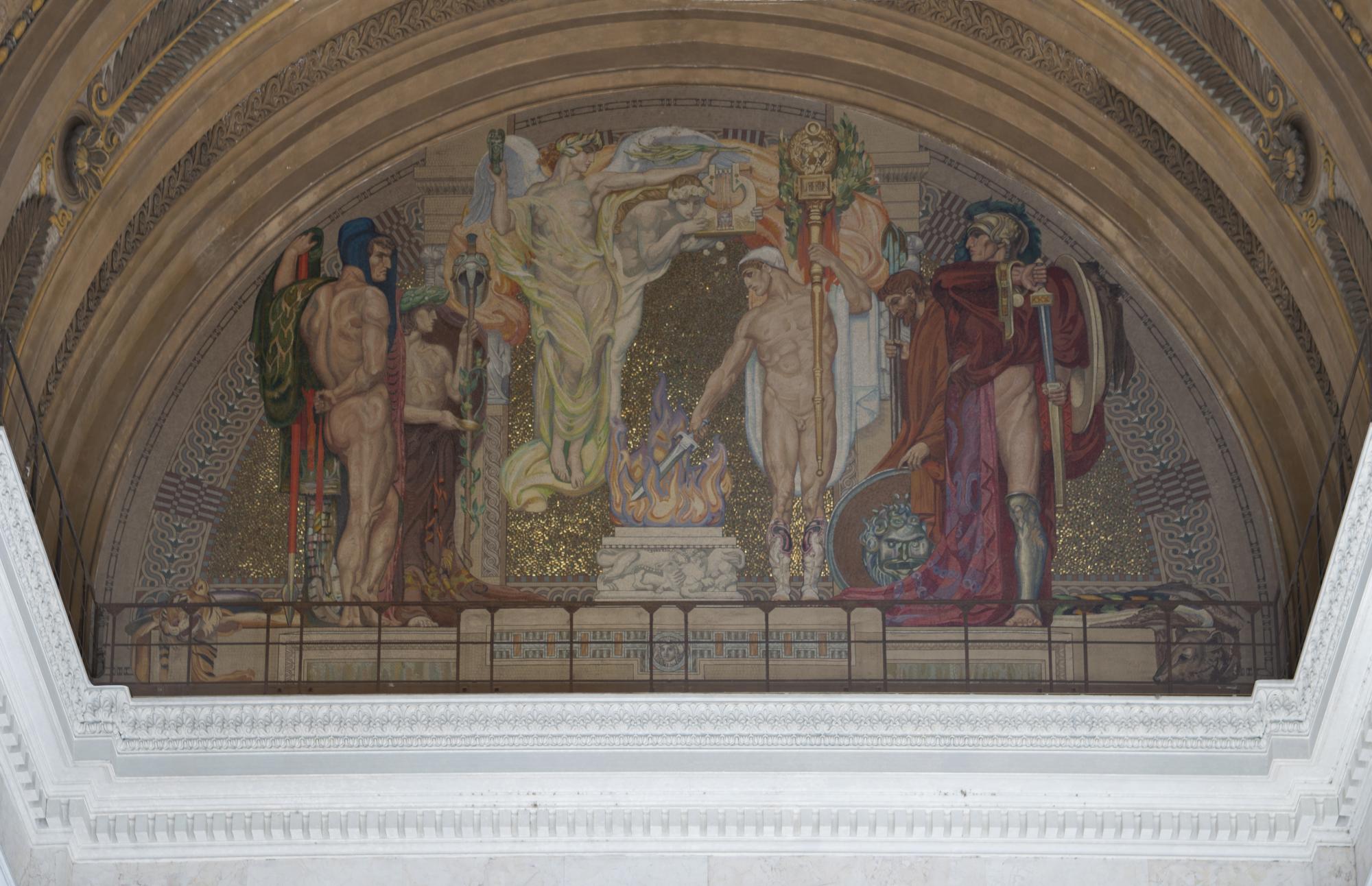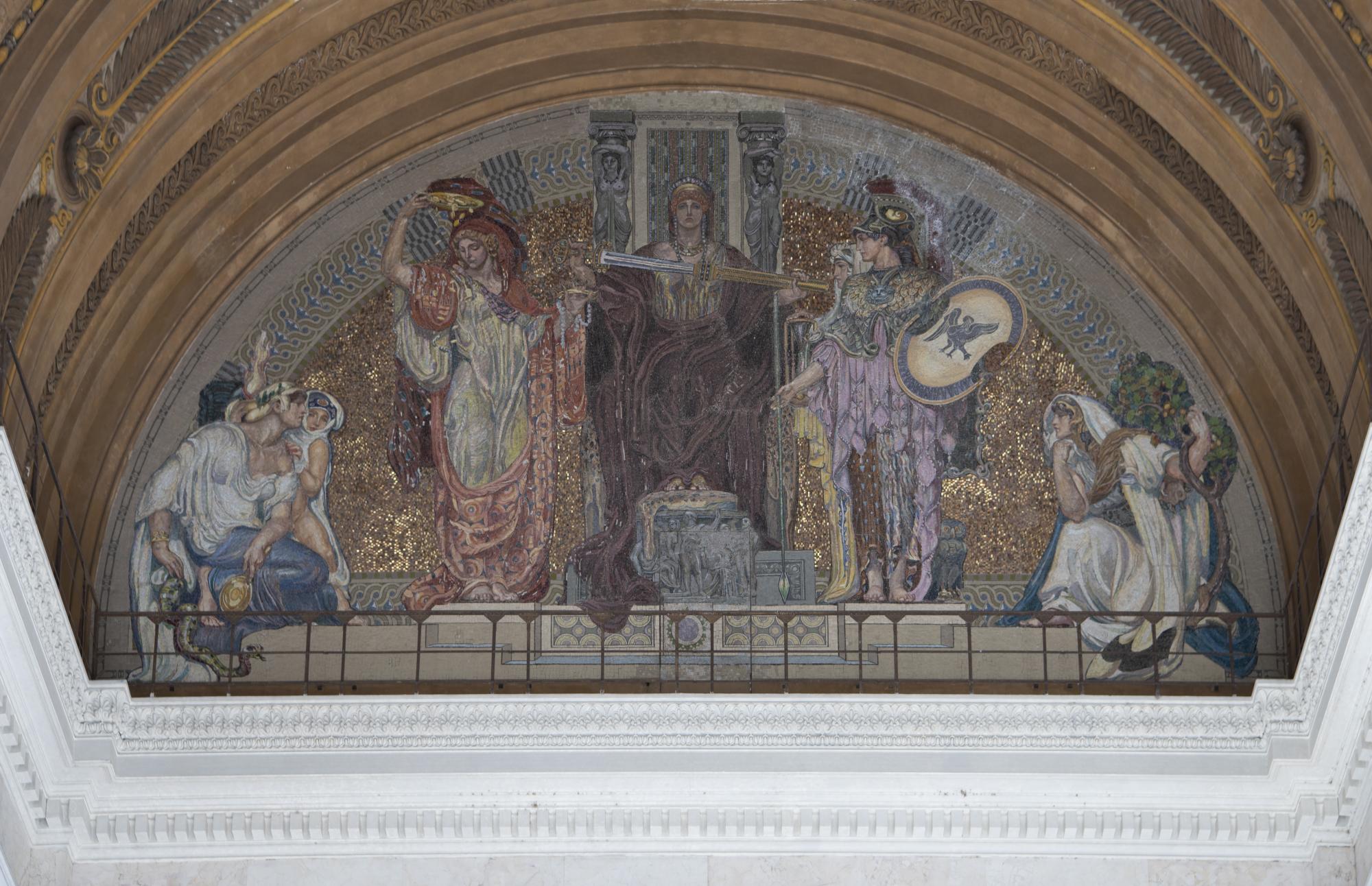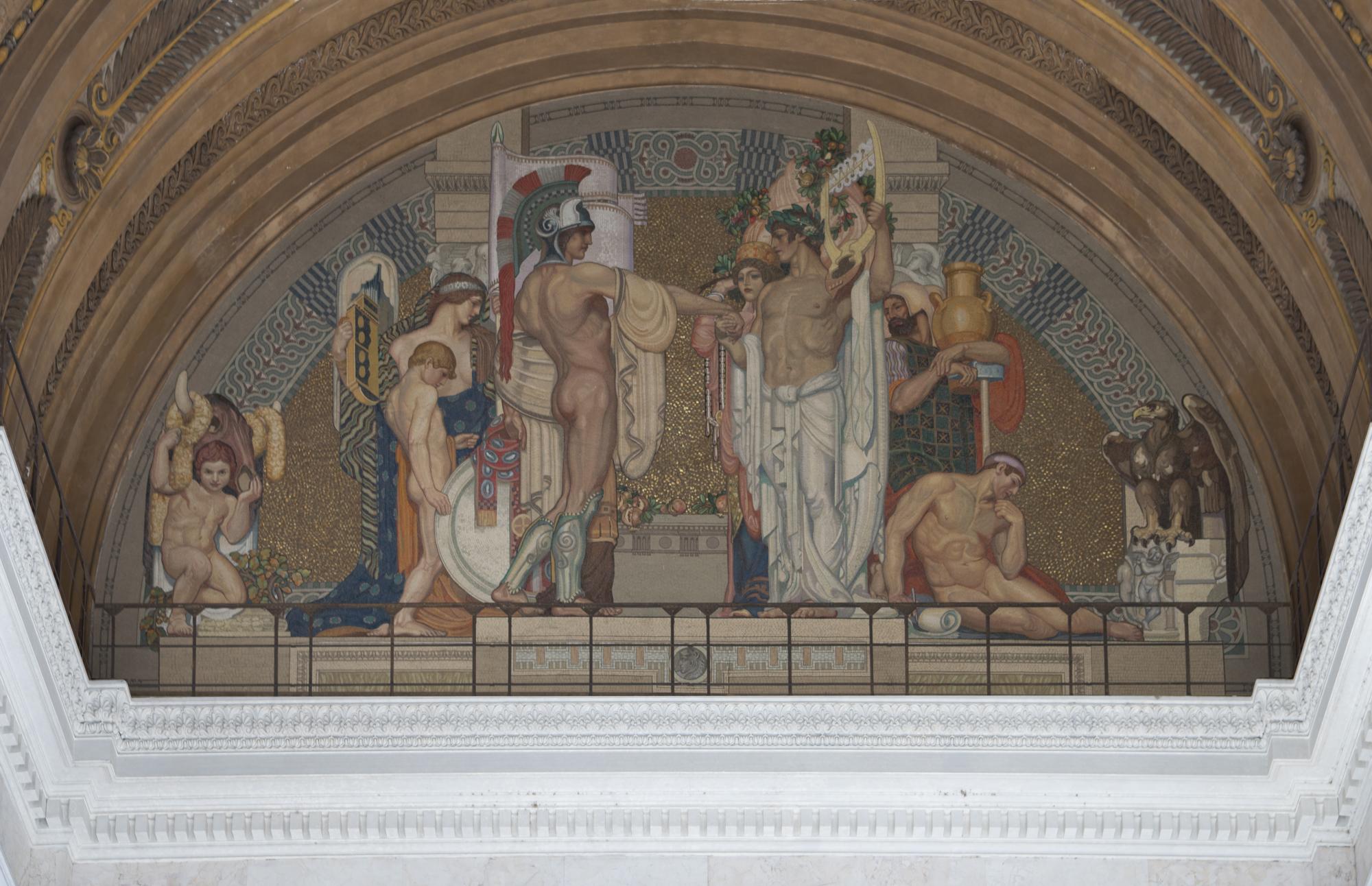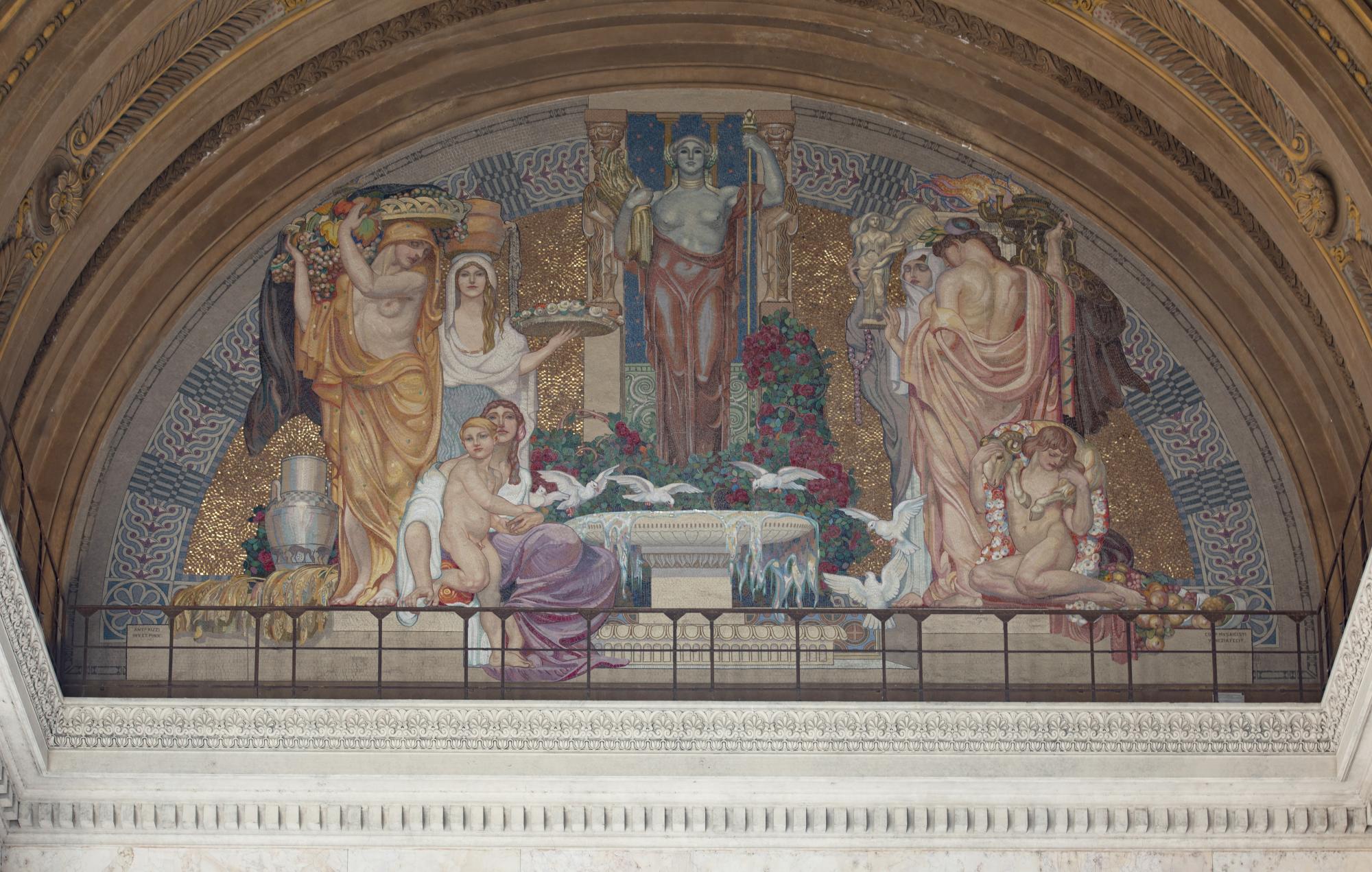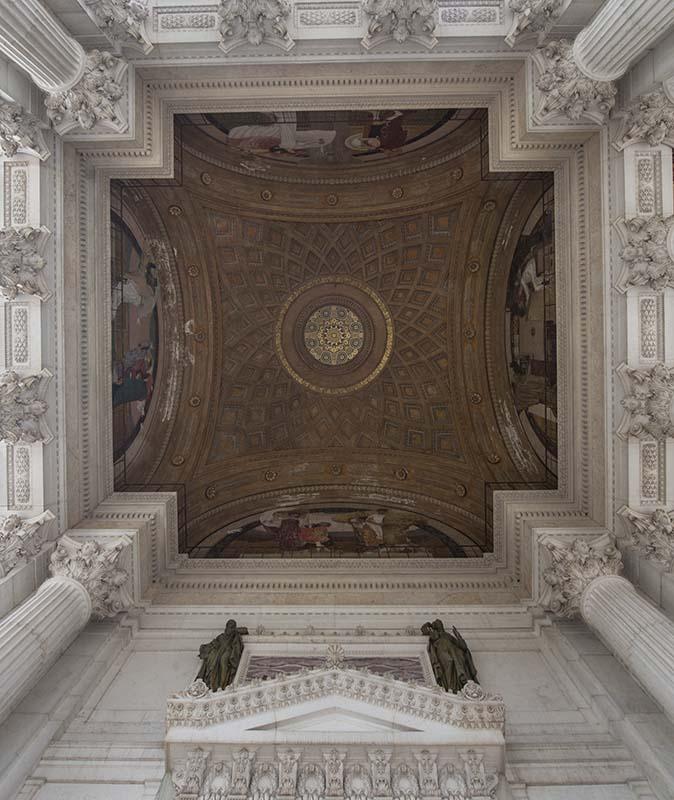Propylaea of Liberty and Unity
Dedicated to the two guiding values of Victor Emanuel II, the unity of the homeland and the freedom of citizens, the propylaea contain mosaics inspired by Gustav Klimt and the Vienna Secession
The propylaea, which stand out on the sides of the Main Colonnade, are dedicated to the two guiding values of Victor Emanuel II and of the entire process of the Risorgimento: freedom and unity.
The eastern propylaeum, to be precise, is entitled to Liberty, the western propylaeum to Unity. The inscriptions under the tympanum of the respective pronaos in fact read: “CIVIUM LIBERTATI” i.e. "TO THE FREEDOM OF CITIZENS" and “PATRIAE UNITATI” i.e. "UNITY OF THE HOMELAND".
The sides of each propylaeum are decorated with a winged figure of The Fame: the Florentine Giuseppe Guastalla (1867-1952) and Giuseppe Romagnoli (1872-1966) from Bologna worked on the Propylaeum of Liberty; Arnaldo Fazzi (1855-1944) and Adolfo Laurenti (1856-1944) from Lucca on the one of Unity.
The reliefs of the two tympanums represent Liberty and Unity. Florentine Emilio Gallori (1846-1904) and Enrico Butti from Lombardy (1847-1932), who received the assignment in 1908, completed the work in 1910.
Gallori represents Liberty as a female figure with sceptre, crown and Roman insignia, surrounded by The Liberal Arts and The Mechanical Arts.
Butti’s Unity is a woman with the Roman eagle beside her who reunites and embraces other women representing all the ages of Italian civilisation.
Each propylaeum has a large decoration also inside. The Roman artist Adolfo Consolani carried out the decoration of the vaults with diamond-shaped coffers in painted stucco between 1916 and 1921: the mosaic centre dates back to 1922.
Antonio Rizzi (1869-1940) and Giulio Bargellini (1875-1936) created the mosaics of the lunettes with subjects inspired by the concepts of Liberty and Unity. Having won the 1912 competition and after a long and complex gestation, the two artists completed their respective works in 1921.
Rizzi and Bargellini introduced in the Vittoriano, each in their own way, the language of the Vienna Secession and of Gustav Klimt in particular, in parallel with what Angelo Zanelli was doing in the Altar of the Fatherland, in particular for The Goddess Rome.
In the western propylaeum Antonio Rizzi interpreted the concept of Liberty by depicting The Value, The Law, The Strength and Peace. In The Value on the south lunette, a young hero hardens his sword on the altar of freedom: from the same altar the ghosts of Glory rise. Some armed men and a young Korybant watch the scene.
In The Law on the east lunette, Justice, seated on a throne, sheathes her sword, surrounded by the other virtues of good governance: Wisdom, Temperance, Strength, Prudence and Magnanimity.
In The Unity on the north lunette, the Trojan hero Aeneas meets the Latin poet Virgil, symbols of Action and Thought respectively: on the sides the eagle and the bull, allusions to the city of Turin and to the process of unification.
In The Peace on the west lunette, the goddess Demeter with a bundle of ears dominates a fountain surrounded by roses and doves: at the sides there are the personifications of The Agriculture, The Family, The Civilisation and The Art.
Bargellini interpreted the concept of Unity through Strenght, Work, Faith and Wisdom.
Below the lunettes and above the entrances to the Main Colonnade there is a plaque between two allegorical bronze statues. Lio Gangeri (1845-1913) made the Sculpture and Painting in the Propylaeum of Liberty; Antonio Garella (1863-1909) Architecture and Music in the Propylaeum of Unity. The design of the precious floor was carried out by Gaetano Koch (1849-1910) by 1907.

